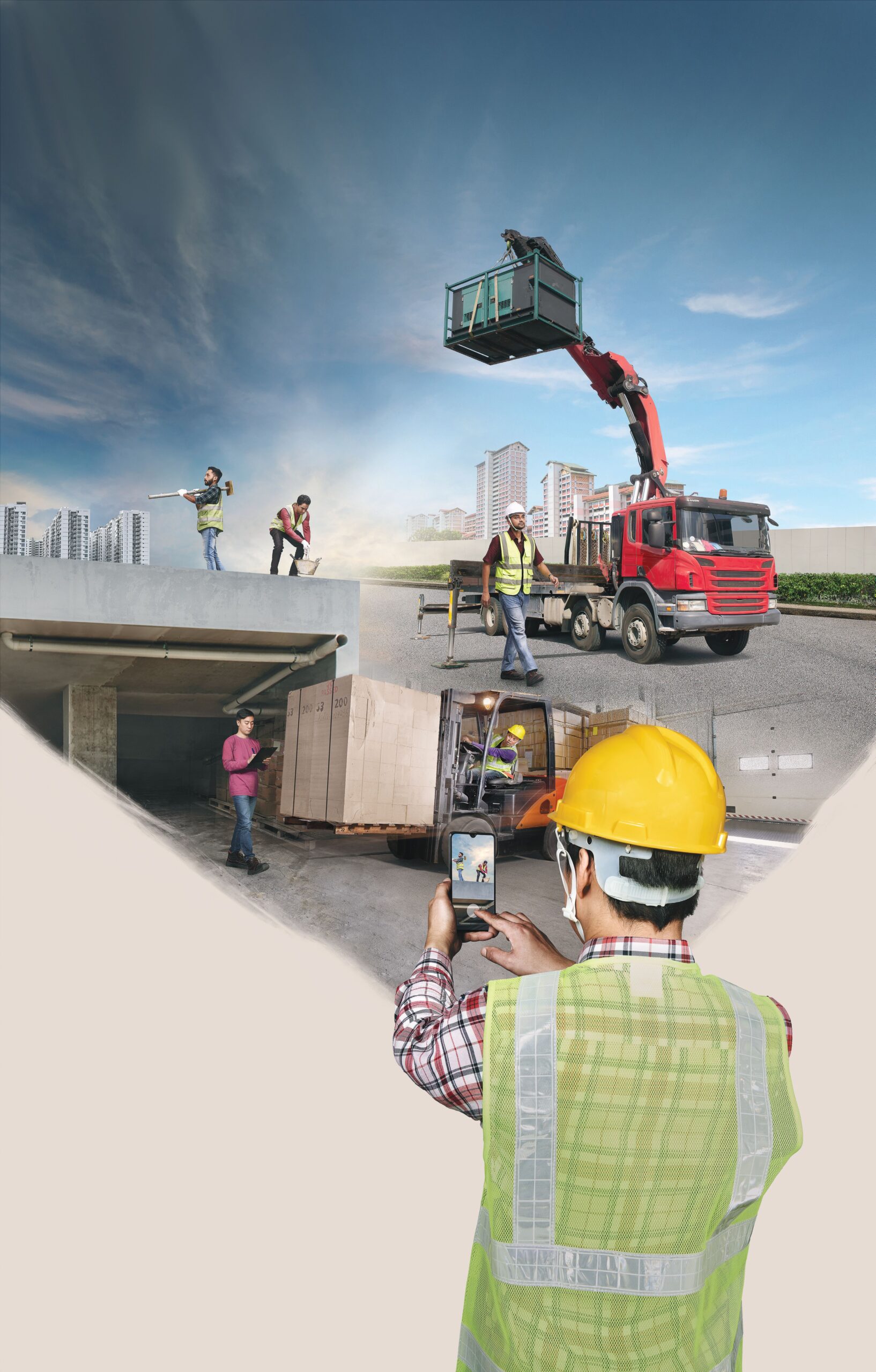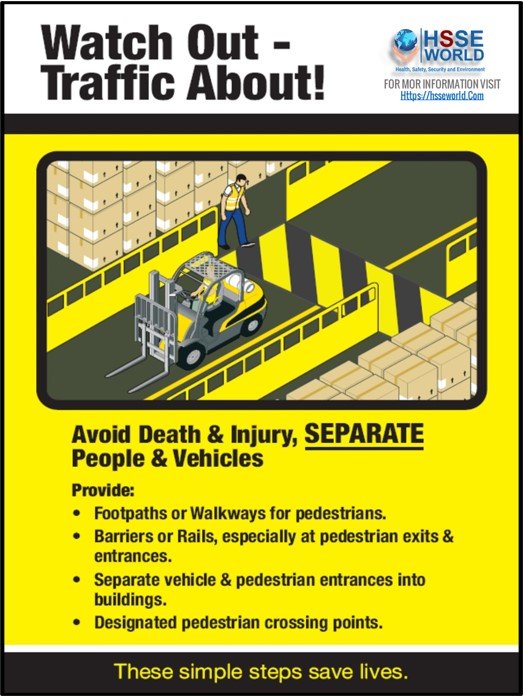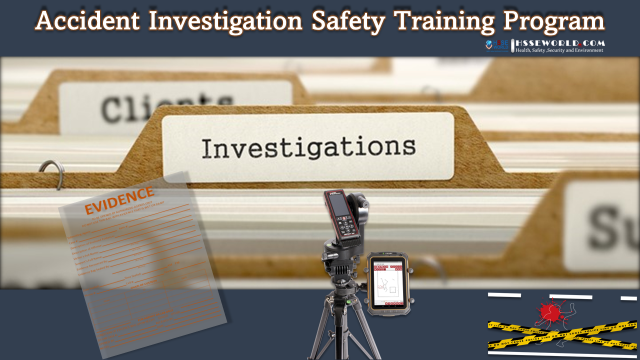As fun as they look to operate, forklifts are a serious workplace hazard. OSHA estimates that there are 110,000 forklift accidents each year and that an American worker is killed in a forklift-related accident every three days.
There’s no question that the human costs are high. But forklift accidents hurt financially, too. According to the National Safety Council, the accidents cost employers an average of $48,000 per work-related disabling injury and $1.39 million per death.

Takeaway: Forklifts introduce serious hazards into a workplace, but there are steps you can take to keep both forklift drivers and their coworkers safe.
It’s estimated that 70 percent of these accidents could be avoided with proper safety training and policies. So here, we’ll help you understand who’s at risk and how to prevent some of the most common forklift accidents.
Who Is at Risk?
Contrary to what some may believe, forklift drivers aren’t the only ones at risk for serious injury. Nearly 80 percent of forklifts accidents involve a pedestrian, which means any employee working with – or in the vicinity of – a forklift is at risk of being the victim of a forklift accident.
Statistics show that some industries experience these tragic accidents more frequently than others. Broken down by industry, major forklift accidents tend to occur in:
- Manufacturing: 42.5%
- Construction: 23.8%
- Wholesale trades: 12.5%
- Transportation: 11%
- Retail trade: 9%
- Mining: 1.2%
Factors that Influence Accident Rates
There are a number of factors that contribute to forklift accidents, and it’s important to understand what they are so you can appropriately manage them. They tend to fall into three categories: user, work environment, and mechanical/design.
User Risk Factors
- Excessive speeds
- Driving with an elevated load
- Improper driving techniques (backing up, turning, braking, accelerating)
- Improper or insufficient warnings to those in vicinity of the forklift
- Poor communication
- Riding or giving rides on forklift or load
- Improperly parking the forklift
- Horseplay, stunt driving, erratic driving
- Poor blocking of semi trailer wheels
Work Environment Risk Factors
- Lack of training or improper training for forklift operators
- Speed or stress due to pressure to keep production high
- Poor assignment of forklifts and operators
- Narrow, crowded, or cluttered aisles
- High traffic volume in work area
- Unclear or undefined forklift lanes
- Poor loading dock condition
Mechanical or Design Risk Factors
- Lack of proper tools, attachments, or accessories
- Poor forklift maintenance or inadequate servicing
- Inadequate or malfunctioning safety devices
- Malfunctioning steering, brakes, or transmission
- Blind spots or obstructions blocking driver’s view
- Poor layout of controls and displays
Common Accidents and Preventative Measures
Though forklift accident rates vary significantly by industry, the types of accidents tend not to. Nearly all incidents involving forklifts can be broken down into one of four categories:
- Collisions
- Toppling
- Drops and falls
- Racking incidents
Here, we’ll outline the most common forklift accident scenarios and offer some strategies you can employ to avoid them.
1. Striking or Crushing a Pedestrian
Pedestrian deaths account for 36 percent of forklift-related deaths. In 20 percent of cases, the victim of the accident is struck, while the remaining 16 percent are crushed by the lift truck.
This type of accident often happens when forklifts and ground workers are working in the same space or when forklifts are moving and collide with pedestrians. This highlights the need for clear and separate paths for lift trucks and pedestrians.
How to Prevent It
Physical barriers that separate forklifts from pedestrians are one of the best ways to prevent collisions with pedestrians. While brightly painted lines on the floor are a good start, they don’t do anything to actually prevent an accident from occurring – they’re merely reminders.
Begin by evaluating intersections and high-traffic areas to identify the most dangerous zones. Decide whether there are areas that should be designated specifically for pedestrians or forklifts only. Where appropriate, create walkways for pedestrians and erect gates or rails to prevent them from crossing into the path of forklifts, and vice versa.
Since some forklift-pedestrian accidents occur because of low visibility, hi-vis safety clothing can also go a long way to helping reduce incident rates. Pedestrians should wear bright colored clothing that alerts drivers to their presence, and make eye contact with drivers to ensure they’re seen. Drivers should also have sensors, horns, lights, and mirrors on their lift trucks, and should sound the horn when turning corners or moving around blind spots.
2. Forklift Overturns
Forklift overturn is the leading cause of fatalities involving lift trucks. There are a number of causes for overturns:
- Improper turning
- Driving with an elevated load
- Driving at excessive speed
- Turning, stopping, or giving the lift truck gas too quickly
- Driving on an incline
- Driving on uneven or wet surfaces
How to Prevent It
Drivers should always follow the speed guidelines provided by their employer or the vehicle manufacturer.
It’s important to take turns carefully and avoid stopping or starting suddenly, which can throw the forklift off balance.
Forklifts should never be overloaded with product, as the weight can cause the truck to tip forward.
When you have a load on the truck, keep it as low to the ground as possible – only raise it enough to clear the floor surface. And it’s never a good idea to raise or lower the load while the truck is in motion.
Go slowly when moving up or down slopes, and always move straight forwards or backwards – never at an angle.
3. Forklift Collisions
We’ve already talked about forklifts striking people – but what about walls or other pieces of machinery? This is one of the easiest types of forklift incidents to imagine, and its particularly prevalent in areas that are crowded or cluttered. It can result in serious injuries and damage to stock.
Some of the most common collisions include reversing into equipment or other lift trucks and striking the ends of racks.
How to Prevent It
Forklift operators should complete 360-degree visual checks before accelerating from a stop, no matter which direction they are going. Always look towards the direction of travel, and eliminate distractions that could take attention away from the task at hand: driving.
Drivers should navigate slowly and carefully around row ends, but employers can help by using steel barrier rails or structural bollards that prevent lift trucks from hitting the racks. Since forklifts move up and down aisles to retrieve product, it might be prudent to extend the rails down the entire length of them.
Employers should also ensure that any area in which forklifts will travel are well lit and free of obstructions.
4. Loading Dock Separation
There are a number of ways that loading dock separation accidents can occur, and about 7 percent of forklift accidents take place when the truck is driven off a loading dock .
The most common incidents include:
- Trailer creep: the repeated impact from forklifts going in and out of the trailer causes it to creep away from the dock
- Early departure: when a truck driver drives away while a forklift is entering, leaving, or still inside the trailer
- Trailer pop-up: when the weight of product and the forklift during loading or unloading causes the trailer to shift at the nose
- Landing gear collapse: when the leg of the landing gear collapses, causing the trailer to tip sideways or forward
How to Prevent It
The best way to avoid loading dock separation – and keep forklift drivers safe – is to make sure that parked trailers are properly restrained. Hooks, wheel locks, and wheel chocks offer layers of safety to prevent a parked trailer from creeping forward under the weight of product and forklift movement.
There should also be clear communication systems in place so that drivers know when it’s safe to enter the trailer and begin loading or unloading procedures. Lights can be great tools to use, since they give drivers a clear indication of when they can proceed into the trailer bed.
Conclusion
It should be clear at this point that forklifts represent an enormous threat to worker safety. With more than 850,000 of them being used at workplaces around the country, it’s essential that employers and workers alike understand the hazards they pose and take every reasonable step to effectively manage them.



